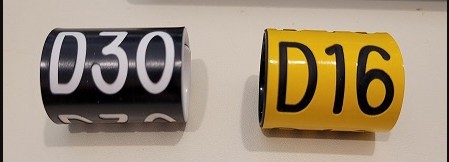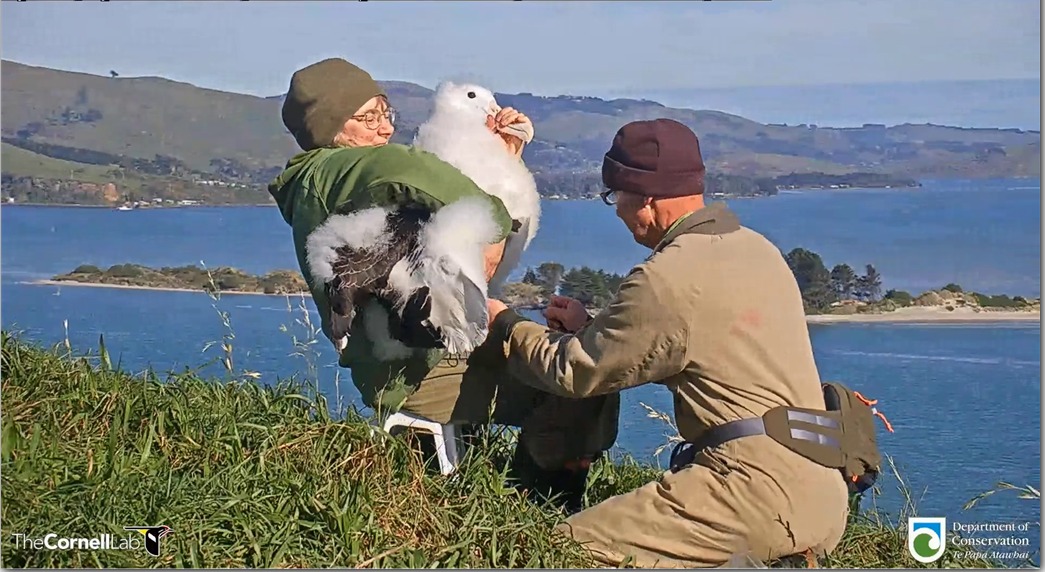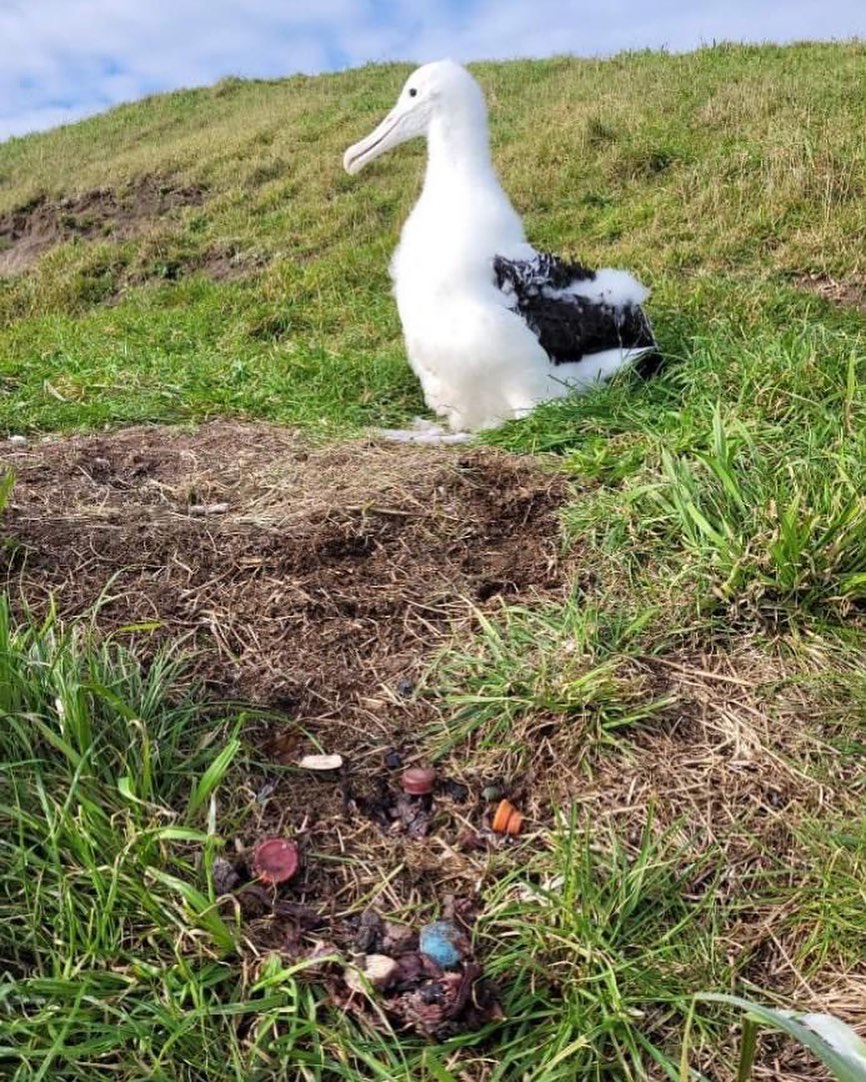
The new colour bands that are being used for the first time instead of the old three-colour combinations
On World Nature Conservation Day (28 July) all 33 chicks of the current breeding season in New Zealand’s mainland colony of globally Endangered and Nationally Vulnerable Northern Royal Albatrosses Diomedea sanfordi at Pukekura/Taiaroa Head were individually banded with alphanumeric plastic bands to allow for their easy identification when they return as pre-breeding adolescents. Males received a black band and females a yellow. The chicks also received a uniquely numbered stainless-steel band on their opposite legs. This season the letter for all the chicks is D, from now on each year will have its own letter on the colour bands. “Manaaki”, this season’s Royal Cam chick, was banded with black colour band D36 on his left leg, with the metal band on the right.
Manaaki gets his bling at 189 days of age, video captured and edited by Lady Hawk

Big unit! Department of Conservation rangers Sharyn Broni (left) and Colin band Manaaki
Use of alphanumeric colour bands puts this long-studied colony on a par with most if not all other albatross monitoring colonies around the world; it should improve the quality of data collection over the old three-colour combinations, where the loss or fading of a band is known to cause identification problems. It also allows, especially when combined with colour options, for a far greater number of combinations.
Information, photographs and video from the Royal Cam Albatross Group New Zealand Facebook page.

One of this season’s Northern Royal Albatross chicks at Pukekura/Taiaroa Head approaching fledging regurgitated a bolus of squid beaks and plastic bottle caps and fragments, photograph by Julia, Department of Conservation Ranger, Taiaroa Head
John Cooper, Emeritus Information Officer, Agreement on the Conservation of Albatrosses and Petrels, 03 August 2023

 English
English  Français
Français  Español
Español